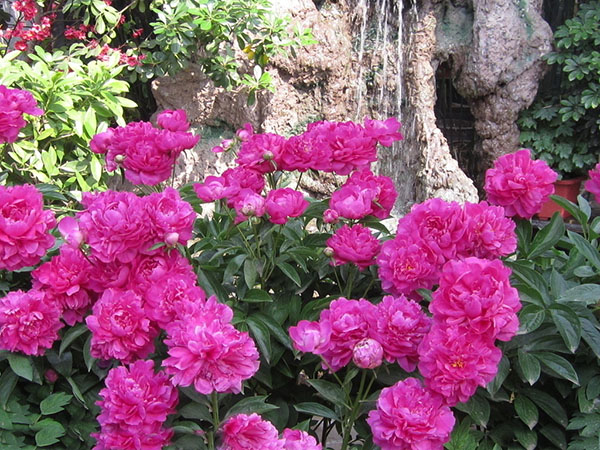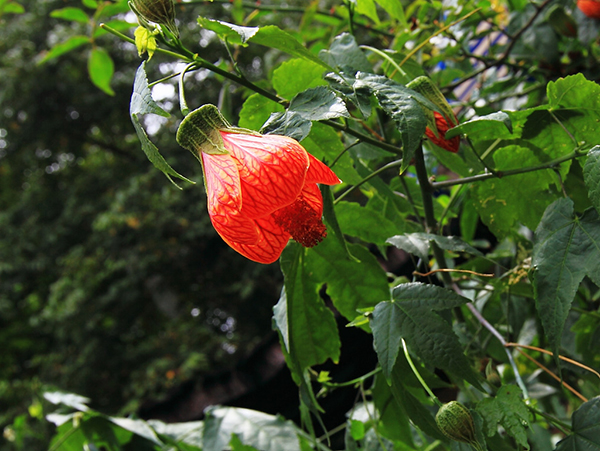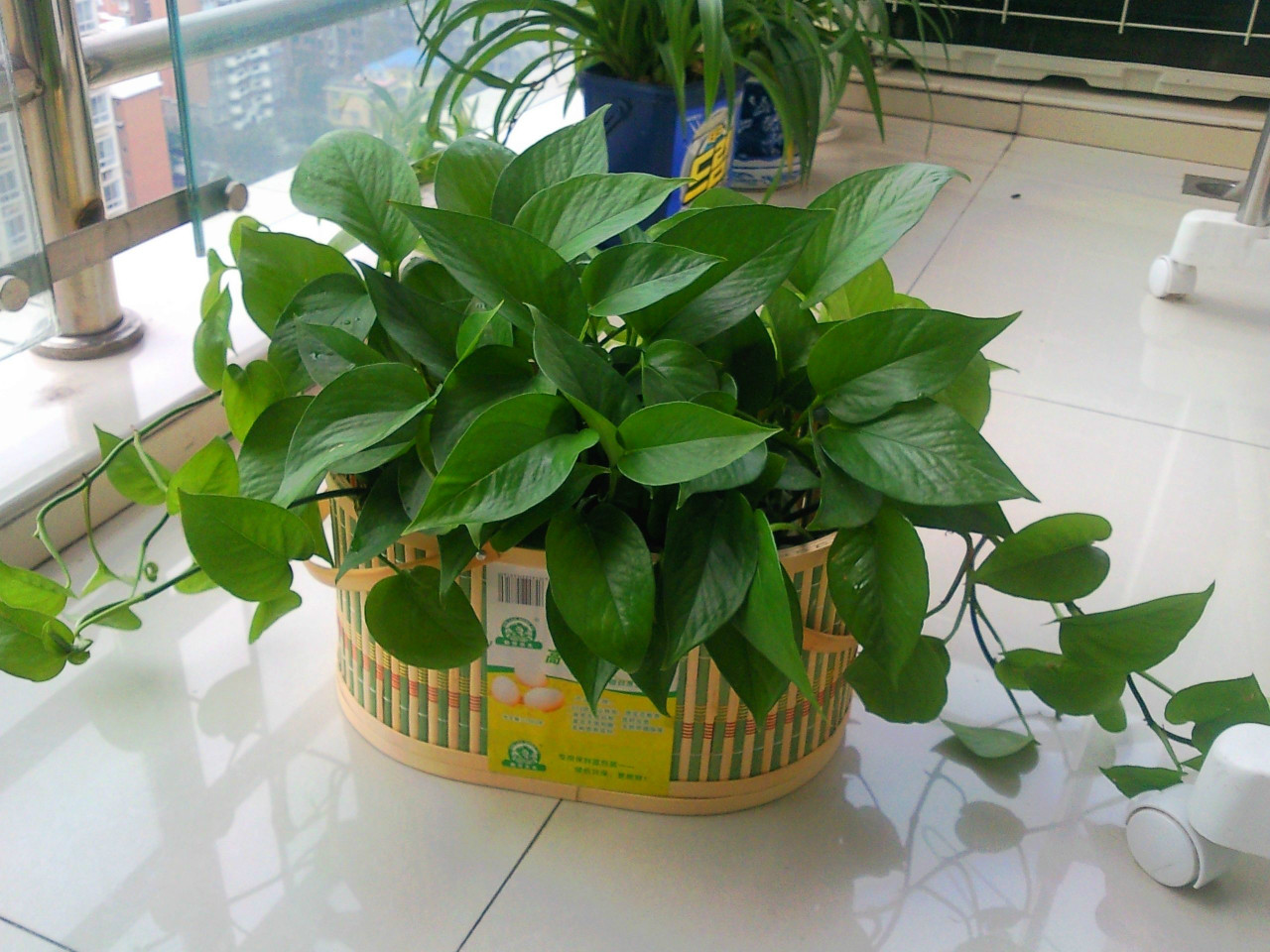Peony culture method

Planting: the soil is required to be loose, fertile and neutral. Cut off the broken and diseased roots of the planted peony seedlings, soak the insecticidal and fungicides into the prepared pot or pit, stretch the root system, fill to the pot or pit, gently shake the seedlings, firmly seal the soil, and the depth of the rhizome is slightly lower than the basin surface or horizon.
Watering: water once after planting. Peony avoid stagnant water, appropriate watering during the growing season. In the arid areas of northern China, water before flowering, water after flowering and frozen water are generally watered. Potted flowers can be cut off and buried in pots after blooming for ease of management.
Fertilization: one year after planting, it is feasible to apply fertilizer in autumn, mainly mature organic fertilizer. It can be combined with loosening soil, spreading and acupoint application. Chemical fertilizers are often used in spring and summer, combined with watering before and after flowering. Pot load can be combined with watering to apply liquid fertilizer.
Pruning: in the year of planting, there are many rows of stubble. After germination in spring, about 5 branches will be left, and the rest will be wiped out to concentrate nutrition so as to make the flowers of the second year big and colorful. Autumn and winter, combined with Qingyuan, cut off the dry flower stalk, thin, non-flowering branches. When potting, trim it to your favorite shape as needed.
Intermediate ploughing: ploughing in time during the growing season, pulling out weeds and paying attention to the occurrence of diseases and insects. In autumn and winter, ploughing is carried out on the sky blocks of more than two-year-old peony.
Change pots: when potted peonies grow for three or four years, they need to be planted in large pots or ramets with new fertile soil in autumn.
Spray: spray stone sulfur mixture before sprouting in early spring, use insecticidal and fungicide mixture in summer, once every 2 weeks depending on the condition. Combined with fertilization, chemical fertilizers and growth regulators should be added.
Promoting flowers: in order to increase festivals or celebrations, the peony can be heated up about 50 days in advance according to the variety, and the normal temperature is controlled at 10murmur25c, with an average of about 15c per day. Pay attention to keeping the plant moist in the early stage, ventilating and transparent after budding, and controlling the temperature according to the requirements of flowering stage after budding. Foliar fertilization should be applied at ordinary times to ensure adequate water supply. In this way, flowers can be seen at any time in winter and spring.
Viewing: the natural flowering period of a single tree peony is about 10 Mel 15 days, which is shortened with the increase of temperature. 3 Mel 8c can be maintained for more than a month. Field planting can take temporary shelter from the wind and light, prolong the viewing time; pot load should be moved to a place where the sun can not be direct, the temperature 5Murray 10c, ventilation and transparent environment, depending on appearance and basin soil moist degree timely watering, flowers do not drench, such as the longest florescence; the need for flower arrangement when cutting, the wound should be cut or burned in the water. Water for flower arrangement should be added with antistaling agent or a little sugar to prolong the blooming time of flower arrangement.
An Analysis of the Culture methods of Mulberry Leaf Peony to teach you to cultivate Mulberry Leaf Peony easily
Mulberry leaf peony is a famous flower in China, with large flowers and many colors, although it is ridiculed in the morning, but it is continuous, with a long flowering period and the most prosperous summer and autumn flowers, which is deeply loved by people. many people want to raise mulberry leaf peonies themselves, but they do not know how to raise them. Next, let's learn more about it with the editor of the decoration network.
An Analysis of the Culture methods of Mulberry Leaf Peony to teach you to cultivate Mulberry Leaf Peony easily
Culture methods of Mulberry Leaf Peony
1. Because mulberry leaf peony is a positive flower, it should be placed in the place where the sunshine is long, so that it can be fully exposed to sunlight in summer, and the lack of light can easily make the flower bud fall, the flower becomes smaller and the flower color is dim.
2. Too dry and wet will affect flowering. In the summer blooming season, depending on the air temperature and the dry and wet condition of the basin soil, water can be watered once or twice a day, but dry and thoroughly irrigated to prevent rotting roots due to high temperature and stagnant water. Watering is better before 9: 00 a. M. or after 5: 00 p. M. to minimize the temperature difference between air temperature and water temperature. At noon, water can be sprayed on the leaf surface and around the flowerpot to reduce the leaf temperature and maintain air humidity. The flowers of Fusang are very tender and cannot be sprayed directly to the flowers, otherwise they can easily cause burns.
3. Change the basin every year, use rotten bean cake and poultry dung as base fertilizer, and then apply well-absorbed and effective compound fertilizer. 0% potassium dihydrogen phosphate can be sprayed to the leaves every 7-10 days to make the leaves green and breed more buds.
4. Fusang is not resistant to cold, so whether it can survive the winter safely is the key. The winter temperature should be kept at 12-15 ℃, and it is easy to freeze to death if it is lower than 5 ℃. However, it should be noted that the temperature should not exceed 20 ℃. Too high temperature will cause branches and leaves to grow, affect dormancy, and blossom in the coming year. The basin soil should maintain 30% relative humidity in winter and should not be watered in large quantities. It is generally not necessary to apply fertilizer in winter, and only a small amount of liquid fertilizer is needed.
5. Pruning should be carried out in spring, leaving stout branches to ensure the concentration of nutrients and the blooming of flowers.
Propagation methods of Mulberry Leaf Peony
1. Mulberry leaf peony cutting
Cutting is the most commonly used method of mulberry leaf peony propagation, which can be cut at any time from early spring to late autumn, with the highest survival rate in the rainy season and can only be carried out in the greenhouse in winter. The best cuttings are one-and-a-half Lignification, about 10 cm long, cut off the lower leaves, leave the top leaves, cut flat, insert in the sand bed, spray water every day to maintain high air humidity. It takes root three weeks after insertion and can be put on the pot after 45 days of growth. Generally speaking, the mulberry leaf peony cut in that year can blossom in the second year.
2. High pressure propagation of mulberry leaf peony.
It is mainly aimed at the woody branches, which are more commonly used in woody plant species. Mulberry leaf peony can also give it a try. It is safer than cutting high-pressure propagation, at least it will not die. Haha, the following is a high-pressure sample diagram. The picture is not mulberry leaf peony.
3. Striping propagation
This is also very simple, that is, press the branches of mulberry leaf peony in the soil, let them take root, and cut off after taking root, the principle is similar to high pressure, but there are slight differences according to the actual situation. These three methods are very simple and operable. Flower friends can give it a try.
Culture method of purse peony 1. Watering:
Purse peony is a fleshy root, stagnant water will lead to root rot, so according to the weather, pot soil and plant growth and other factors appropriate watering, adhere to the principle of no dry, no watering, no stagnant water.
2. Fertilization:
Purse peony likes fertilizer, when planting and turning the pot to change soil, some bone powder or organic fertilizer can be added to the cultivated soil, and diluted nitrogen, phosphorus and potassium liquid fertilizer can be applied every two weeks during the growth period. Proper fertilization can help it bloom and flourish, and do not apply fertilizer during dormant period and after flower bud coloration.
3. Lighting:
Purse peony is afraid of high temperature and strong light, likes the semi-shady environment with sufficient scattered light, and is relatively cold-resistant, so it should be placed under the big tree in the courtyard, under the grape frame, as high as the shady side of the building, east or north balcony.
4. Humidity:
During the period of high temperature in summer, the purse tree peony enters the dormancy period, at this time, the purse tree peony plant should be placed in a well-ventilated shade and no direct light can be seen. At this time, more water should be sprinkled on the nearby ground to increase the air humidity and reduce the temperature.
- Prev

Culture method of Lantern Flower
Lantern flower is fragile, although it looks very delicate and beautiful, but it can not stand the burning of the sun. Lanterns are naturally favored by the high humidity and cool environment, and the suitable temperature for growth is about 10-25 ℃.
- Next

What if the green pineapple leaves turn yellow?
The main reason for the yellowing of green pineapple leaves is that, on the whole, green pineapple leaves turn yellow. if it is hydroponic, there are bacteria in the water, and if it is cultivated in soil, it may be rotting rot. relatively speaking, hydroponic green pineapple is more likely to have yellow leaves than soil-cultured green pineapple.
Related
- Fuxing push coffee new agricultural production and marketing class: lack of small-scale processing plants
- Jujube rice field leisure farm deep ploughing Yilan for five years to create a space for organic food and play
- Nongyu Farm-A trial of organic papaya for brave women with advanced technology
- Four points for attention in the prevention and control of diseases and insect pests of edible fungi
- How to add nutrient solution to Edible Fungi
- Is there any good way to control edible fungus mites?
- Open Inoculation Technology of Edible Fungi
- Is there any clever way to use fertilizer for edible fungus in winter?
- What agents are used to kill the pathogens of edible fungi in the mushroom shed?
- Rapid drying of Edible Fungi

